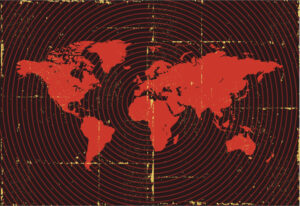Every country in sub-Saharan Africa and South Asia, along with some other low-income and middle-income countries often experience blood shortages. According to the World Health Organization (WHO), millions of people die each year due to hemorrhage and anemia in these “blood deserts.” In 2023, a coalition of 17 delegates from around the world (58% from low-income countries and 42% from the U.S.) collaborated to formally define blood deserts as regions where blood components are not available in a “timely and affordable manner in at least 75% of cases where a transfusion is needed.” The delegates also discussed three emerging strategies that may be able to help alleviate the blood shortages: (1) civilian walking blood banks that have been used extensively in the military, (2) intraoperative autologous transfusion for surgery patients at risk of hemorrhage, and (3) drone-based delivery of blood products. The coalition also worked to identify knowledge gaps and develop specific implementation agendas for all three of these innovative strategies. Since blood is classified as an essential medicine by the WHO, all of these strategies should be considered to alleviate blood shortages in blood deserts while high-quality blood banking systems are established.
Reference:

